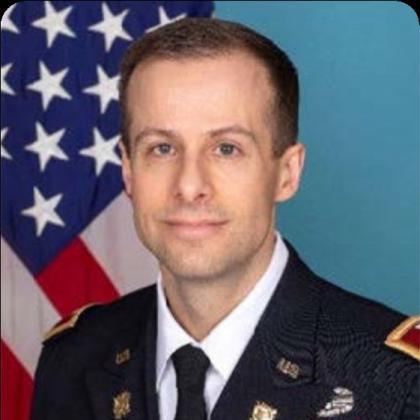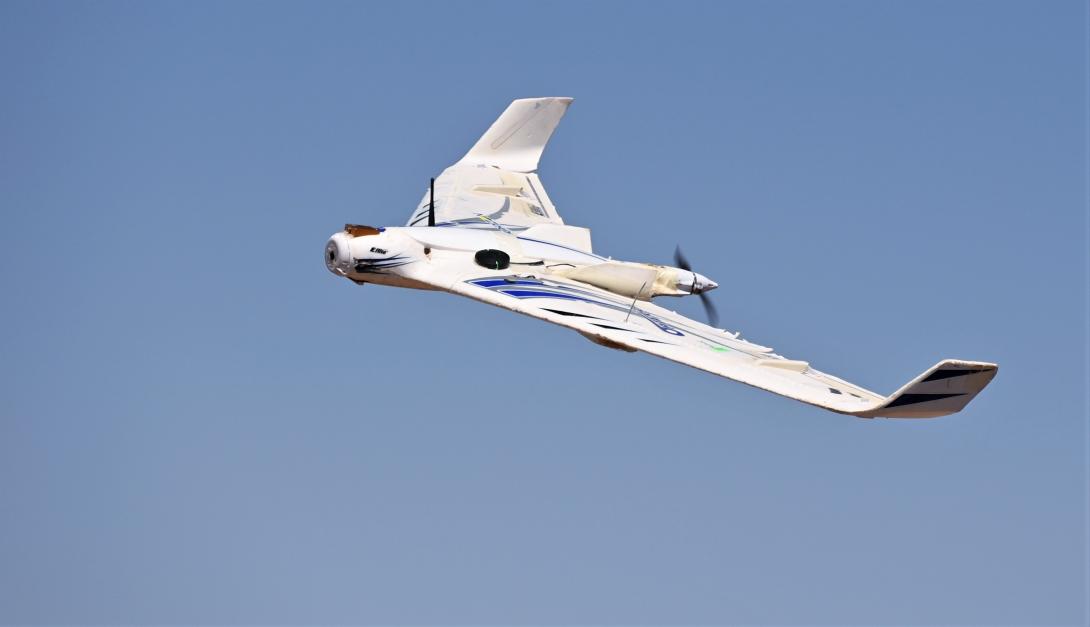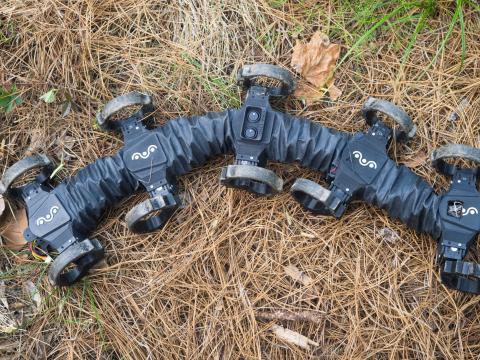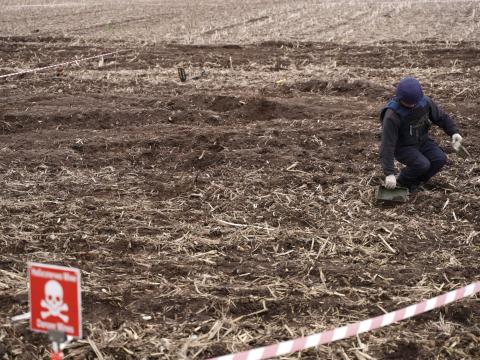U.S. Military May Prototype Counter-Drone Systems Next Year
The U.S. military could begin prototyping various technologies to defeat unmanned aerial systems as early as next year, officials said in a recent capability demonstration.
The Joint Counter-small Unmanned Aircraft Systems Office (JCO), the Rapid Capabilities and Critical Technologies Office, and the military services hosted the fifth in a series of counter-drone technology demonstrations June 3-28. The demonstration focused on current industry capabilities to detect, track, identify, and/or defeat unmanned swarms. Eight companies participated in the demonstration, with nine systems in total.
The demonstration included both kinetic and nonkinetic systems, and future demonstration events will be conducted as the JCO coordinates with joint partners to identify priority focus areas to enable the rapid production and fielding of effective capabilities, officials told reporters during a July 24 media roundtable.
Col. Michael Parent, USA, chief of the JCO’s Acquisition and Resources Division, Maj. Matthew Mellor, USA, JCO assistant product manager for technology planning, and Hi-Sing Silen, JCO project manager, test lead, said they are continuing to evaluate the data from the event. Within the next month, they should be able to provide that data to the vendors, the military services and the combatant commands.
They also indicated that prototyping could begin soon if the services and combatant commands like what they see. “We’re looking at potentially—depending on the results and also the needs of the services and the combatant commands—looking at prototyping from the pool of vendors,” Col. Parent reported. “Again, it’s always based on the combatant commands and the services, what their needs are, what they see as being promising for their geographical areas.”
The officials described the demonstration as the most challenging so far in the series. Test scenarios simulated relevant flight profiles and were not shared with vendors prior to the event. Swarms were operated by a third party and included a mix of fixed-wing and rotary-wing group 1 UAS and slow and fast fixed-wing group 3 UAS. “It was the most challenging demonstration to date at this point, where up to 50 UAS targets were converging on defended area flight profiles,” Col. Parent said. However, it was “a very successful demonstration, informing us and our allies what capabilities exist out there for this very challenging profile,” he added.
The demonstrations show that no single solution, or type of solution, can effectively defend against the rapidly evolving unmanned system threat. “The challenge of the profiles really meant that no one characteristic, no one capability, whether the kinetic and nonkinetic, in itself, could really defeat this kind of a profile,” Col. Parent said. “So, what we saw was that you really do need a full system of systems approach, a layered approach. We’re talking about a very large profile of 50 or more in a swarm, coming out from different angles, from all angles, really different speeds and different sizes.”

It was the most challenging demonstration to date at this point, where up to 50 UAS targets were converging on defended area flight profiles.
Col. Parent also indicated that industry has responded well to the rapidly changing UAS environment. “What we’re seeing overseas with adversaries is that they’re evolving very quickly with command and control capabilities,” he said. “What I can say is the selected vendors show increased maturity and awareness of the threat environment that the U.S. and allies are facing.”
Capabilities and technologies tested in the demonstration included multimission radars, electro-optical/infrared cameras, radio frequency scanners, radio frequency jammers, guided rockets, kinetic interceptor drones and small arms weapon systems. The officials participating in the roundtable indicated that counter-drone technologies are maturing.
Eight companies participated in the demonstration with a total of nine systems: Clear Align; Trakka USA Defense; Ideas, Commitment, Results (ICR) Inc.; ELTA North America; Teledyne FLIR; Science Applications International Corporation (SAIC); Advanced Technology Systems Corporation (ATSC); and Anduril Industries.





Comments